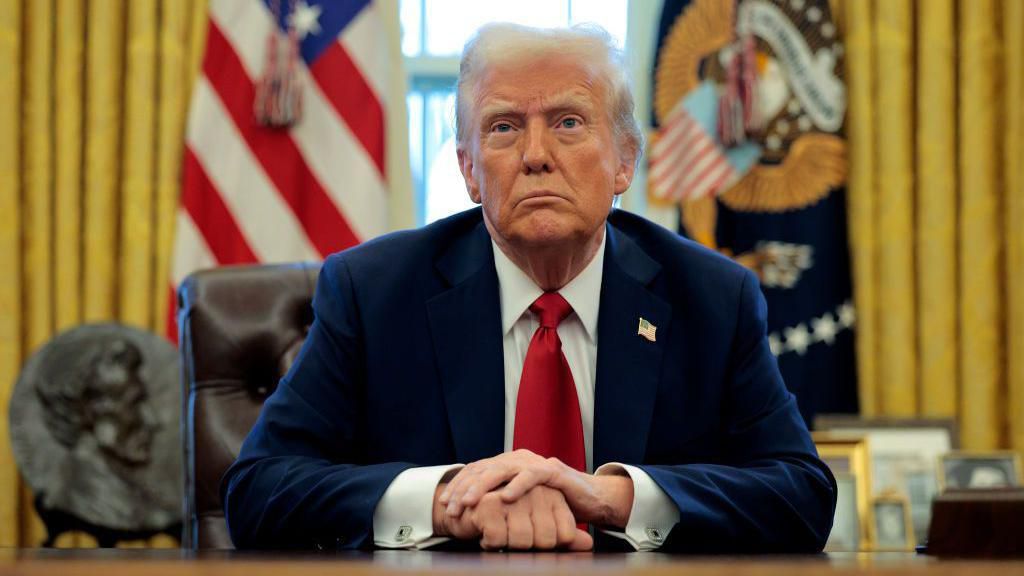Bridging the crypto divide: Global adoption trends and the African lag (1)
Global cryptocurrency markets have undergone a breathtaking transformation over the past five years, evolving from niche experiments into pillars of the modern financial system. In January 2025, total market capitalization of all cryptocurrencies had climbed to approximately US$3.32 trillion, up from under US$500 billion at the start of 2020 (Fortunly, 2025).
This surge reflects not only retail enthusiasm but also a wave of institutional adoption: asset managers such as BlackRock, Fidelity, and Grayscale have collectively listed over US$75 billion worth of crypto‑backed ETFs and trusts, while corporate treasuries—from Tesla to MicroStrategy—hold billions in Bitcoin and Ethereum alongside traditional reserves (Fortunly, 2025; Kraken, 2024).
Parallel to market‑cap growth, user participation has expanded dramatically. As of late 2024, more than 560 million individuals worldwide—roughly 6.8 percent of the global population—own or use cryptocurrencies (Kraken, 2024). Venture funding has kept pace: despite a broader “funding winter,” crypto and blockchain startups attracted US$11.5 billion in venture capital across over 2,150 deals during 2024, according to Galaxy Research (Galaxy, 2025).
At the same time, decentralized‑finance (DeFi) platforms have unlocked new on‑chain credit markets and automated trading infrastructure, driving Total Value Locked (TVL) from US$5 billion at the end of 2020 to over US$190 billion by December 2024 (UPay Blog, 2025).
Central banks have likewise pivoted toward digital currencies in response to these private‑sector innovations. A mid‑2024 survey by the Bank for International Settlements found that 94 percent of central banks globally are now exploring or piloting retail or wholesale central bank digital currencies (CBDCs) to modernize payment systems and shore up financial resilience (BIS, 2024).
Pilot projects such as the mBridge wholesale CBDC platform and retail launches of e-krona, Sand Dollar, and eNaira underscore that sovereign digital money is becoming an integral component of 21st‑century monetary frameworks.
Yet this global momentum stands in stark contrast to Africa’s uneven progress. Although several African nations—most notably Nigeria (which handled US$59 billion of on‑chain transaction value between July 2023 and June 2024, ranking second globally) and Kenya, Ghana, and South Africa (all in the top 50 of Chainalysis’s 2024 Global Crypto Adoption Index)—boast vibrant grassroots adoption, the continent as a whole accounted for only 2.7 percent of global on‑chain volume during that period, reflecting infrastructure and regulatory deficiencies (Chainalysis, 2024).
Moreover, only about 25 percent of Sub‑Saharan African countries have enacted formal crypto‑asset legislation, leaving the majority in policy limbo and exposing users to legal uncertainty (Fuje, Quayyum, & Molosiwa, 2022).
With the world’s digital‑finance rails accelerating around crypto, Africa faces a pivotal choice: will it bridge the divide—leveraging blockchain to enhance financial inclusion, catalyze youth entrepreneurship, and integrate its economies into the global digital‑asset ecosystem—or will patchwork regulation and underinvestment consign the continent to the periphery of the crypto revolution?
The following analysis examines international best practices, diagnoses Africa’s barriers, and lays out a pragmatic roadmap for harmonized regulation and infrastructure development that can unlock the full promise of digital currencies across Africa.
Africa’s grassroots crypto activity is among the world’s most vibrant, yet this energy has not translated into structured markets or legal certainty. Chainalysis’s 2024 Global Crypto Adoption Index ranks Nigeria second globally, with US$59 billion received on‑chain between July 2023 and June 2024, followed by Kenya (21st), Ghana (29th), and South Africa (31st) in global terms—despite Sub‑Saharan Africa accounting for just 2.7 percent of world on‑chain volume over the same period (Chainalysis, 2024). Yet formal regulation remains the exception. An IMF survey found that only 25 percent of Sub‑Saharan African countries have enacted dedicated crypto‑asset laws, while two‑thirds have various restrictions in place and six nations—including Cameroon, Ethiopia, and Tanzania—maintain outright bans (Fuje, Quayyum, & Molosiwa, 2022). This dichotomy between prolific use and patchwork legality breeds uncertainty, deterring institutional investment and exposing retail users to unmonitored risks.
Robust digital‑asset markets depend on reliable connectivity, power, and device access—areas where Africa still lags:
These infrastructural constraints impede on‑ramp access to regulated digital‑asset services, reinforcing reliance on informal, peer‑to‑peer channels.
Where legislation exists, it often falls short of providing clear, enabling frameworks:
This regulatory uncertainty—ranging from bans to unfinalized guidelines—stifles domestic innovation, pushes liquidity offshore to unregulated exchanges, and exposes African crypto participants to legal and financial risk.
- The global real‑estate tokenization market was valued at US US$3.5 billion in 2024 and is projected to grow to US$19.4 billion by 2033 at a 21 percent CAGR (Custom Market Insights, 2024). Meanwhile, Sub‑Saharan Africa’s SMEs face a US US$331 billion financing gap—4.8 times current formal lending—constraining 44 million MSMEs (International Finance Corporation, 2018). Tokenizing property assets, warehouse receipts, and receivables on blockchain platforms could inject much‑needed liquidity into local economies, enabling smallholders and entrepreneurs to access global capital pools at lower cost. Yet minimal legislative support and regulatory clarity in Africa throttle these innovative financing models.
- In December 2024, Total Value Locked in DeFi protocols surpassed US US$190 billion, yet Africa’s contribution to on‑chain developer activity remains marginal (UPay Blog, 2025). Nigeria hosts 3 percent of the world’s blockchain developers—over 300,000 builders—but regulatory ambiguity, infrastructure deficits, and licensing delays drive talent offshore (Mariblock, 2025). This brain drain deprives African ecosystems of the skilled professionals needed to launch and scale homegrown DeFi startups, stunting the continent’s ability to compete in the rapidly evolving global digital‑finance landscape.
- – In the absence of robust local licensing regimes, global exchanges like Binance dominate Africa’s crypto markets, capturing 52–72 percent of regional users in Africa, South America, and the Middle East (CryptoQuant, 2025). This concentration channels fee revenues, trading volumes, and user data offshore—yielding little benefit to domestic tax bases or market‑development efforts. It also entrenches a form of “digital dependency,” wherein African traders and regulators must rely on platforms headquartered abroad, further widening the crypto divide.
>>>Prof. Raphael Nyarkotey Obu is a Professor of Naturopathy | Barrister & Solicitor (The Gambia Bar)| Chartered Health Economist| President, Nyarkotey College of Holistic Medicine & Technology. He can be reached via [email protected]










